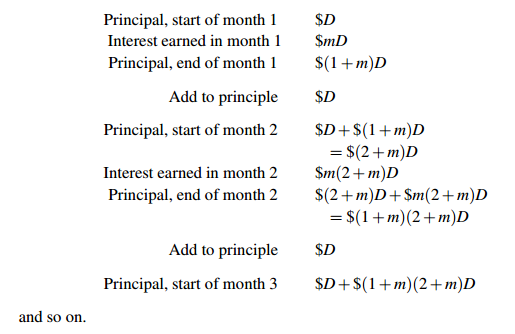

تاريخ الرياضيات

الاعداد و نظريتها

تاريخ التحليل

تار يخ الجبر

الهندسة و التبلوجي


الرياضيات في الحضارات المختلفة

العربية

اليونانية

البابلية

الصينية

المايا

المصرية

الهندية


الرياضيات المتقطعة

المنطق

اسس الرياضيات

فلسفة الرياضيات

مواضيع عامة في المنطق


الجبر

الجبر الخطي

الجبر المجرد

الجبر البولياني

مواضيع عامة في الجبر

الضبابية

نظرية المجموعات

نظرية الزمر

نظرية الحلقات والحقول

نظرية الاعداد

نظرية الفئات

حساب المتجهات

المتتاليات-المتسلسلات

المصفوفات و نظريتها

المثلثات


الهندسة

الهندسة المستوية

الهندسة غير المستوية

مواضيع عامة في الهندسة

التفاضل و التكامل


المعادلات التفاضلية و التكاملية

معادلات تفاضلية

معادلات تكاملية

مواضيع عامة في المعادلات


التحليل

التحليل العددي

التحليل العقدي

التحليل الدالي

مواضيع عامة في التحليل

التحليل الحقيقي

التبلوجيا

نظرية الالعاب

الاحتمالات و الاحصاء

نظرية التحكم

بحوث العمليات

نظرية الكم

الشفرات

الرياضيات التطبيقية

نظريات ومبرهنات


علماء الرياضيات

500AD

500-1499

1000to1499

1500to1599

1600to1649

1650to1699

1700to1749

1750to1779

1780to1799

1800to1819

1820to1829

1830to1839

1840to1849

1850to1859

1860to1864

1865to1869

1870to1874

1875to1879

1880to1884

1885to1889

1890to1894

1895to1899

1900to1904

1905to1909

1910to1914

1915to1919

1920to1924

1925to1929

1930to1939

1940to the present

علماء الرياضيات

الرياضيات في العلوم الاخرى

بحوث و اطاريح جامعية

هل تعلم

طرائق التدريس

الرياضيات العامة

نظرية البيان
Investments: Loans
المؤلف:
W.D. Wallis
المصدر:
Mathematics in the Real World
الجزء والصفحة:
215-217
11-2-2016
1636
You do not normally wait until the end of a loan period to pay back a loan. The usual practice is to pay equal amounts each month (or each week or . . . ). Another situation in which equal deposits are made is the periodic savings account, such as a Christmas club or retirement account, where a fixed amount is deposited into savings each period.
Regular Savings
Consider a periodic savings account. Suppose you deposit $D each month. The interest each month is M%; write m = M/100. Assume the account is empty to start, and you pay in for n months. (Often n = 11 or 12, because people use these accounts to save for vacations or Christmas shopping.)
The calculations to find the amount at the end of the n-th month might start:

This soon becomes complicated. An easier way is to calculate the effect of putting each new payment in a new bank account. The total in all the accounts at the end of n months will be the required amount.
Payment 1 draws interest for n months, so the amount in that account at the end is $D(1 + m)n; payment 2 draws interest for n − 1 months, so the amount in that account at the end is $D(1+m)n−1. The total of accounts 1 and 2 is

We call this amount the accumulation.
Sample Problem 1.1 At the beginning of each month you put $100 into an account that pays 6% annual interest. How much have you accumulated at the end of the year?
Solution. 6% annual interest is .5% per month. So m = .005,n = 12,D = 100, and you get
$100(1.00513−1.005)/.005
= $100(1.066986−1.005)×200
= $20000(0.061986)
= $1239.72
Some investment funds are set up so that you make your payment at the end of the payment period, rather than the beginning. In these cases it is usual to add the last payment to the accumulation, even though it accrues no interest. In that case the accumulation is

For example, in a Christmas club, you might make your first payment on January 31st and withdraw the money late in November. There are ten payments. If the annual interest is again 6%, your accumulation is
